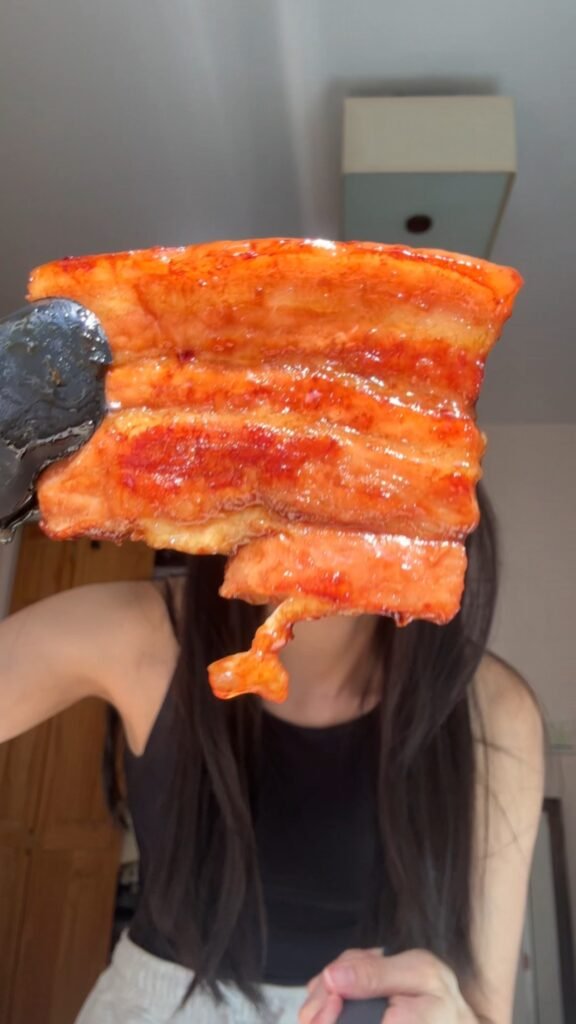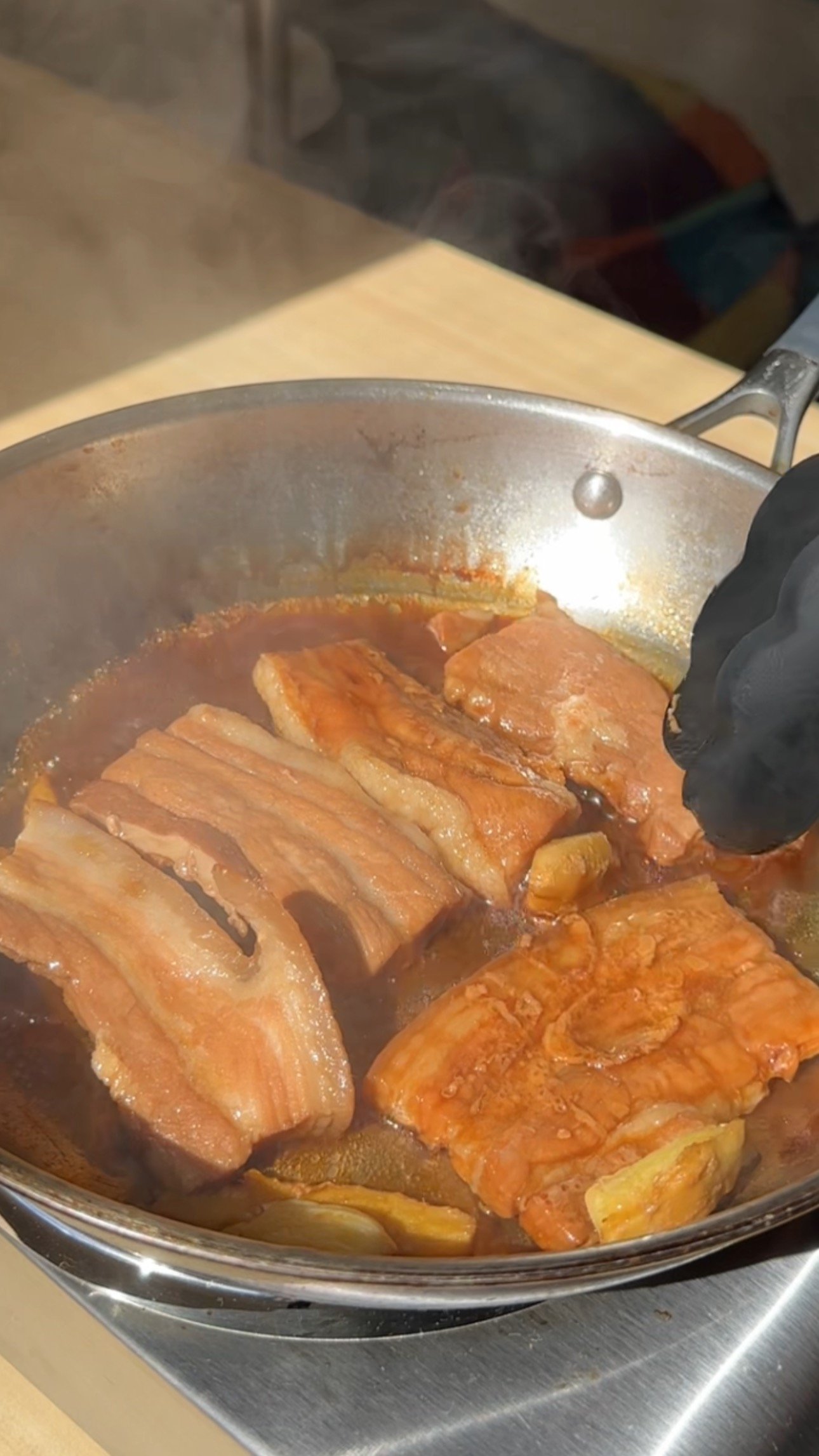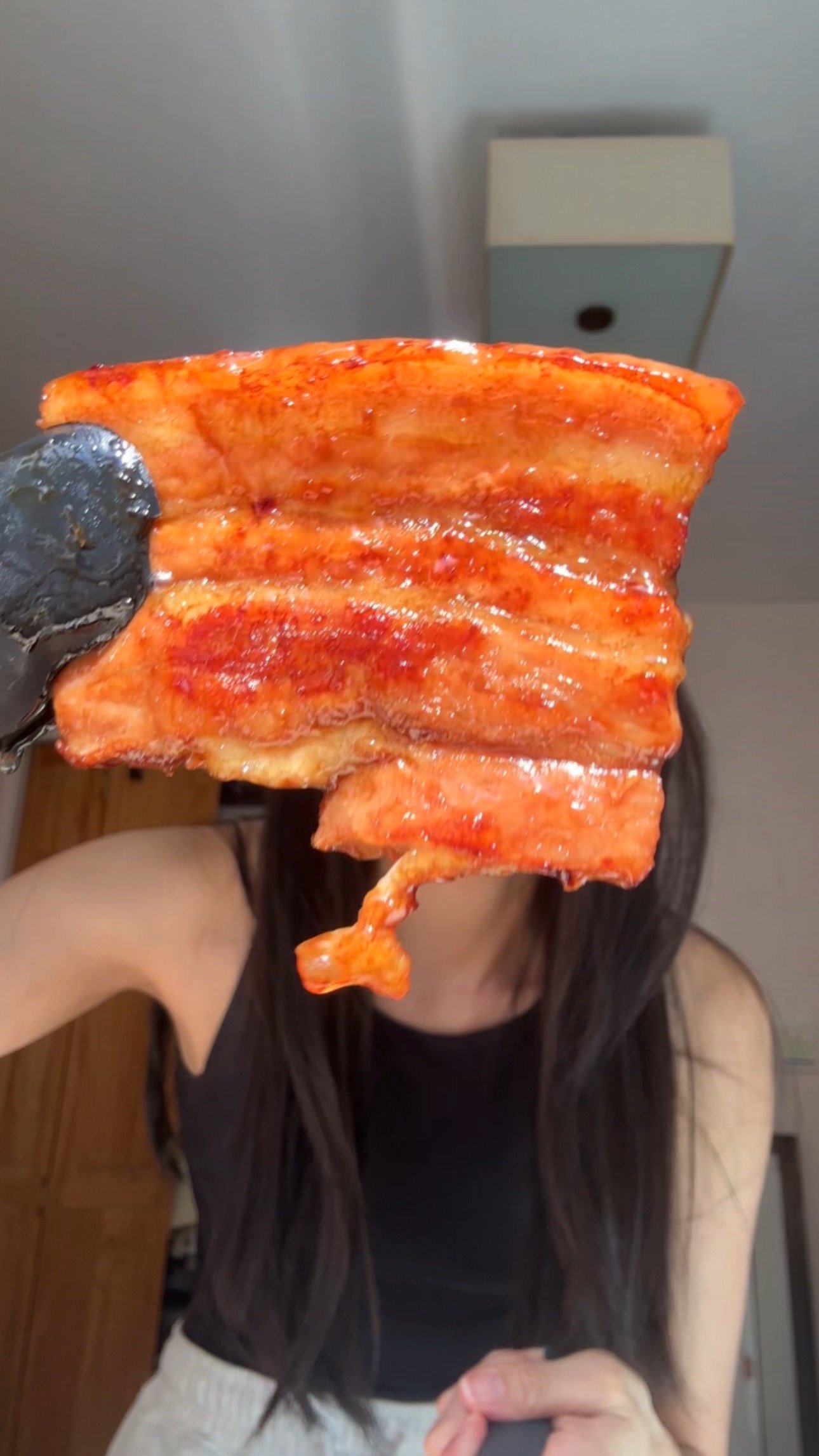
Stove top pork belly is one of the most comforting and flavorful dishes you can make at home. Unlike quick pan-fried versions, this recipe uses a slow braising method right on the stove. The pork belly simmers gently in a savory mix of soy sauces, Shaoxing wine, garlic, and ginger until it turns tender and deeply infused with flavor. With minimal hands-on time, the result is melt-in-your-mouth pork belly coated in a glossy, rich sauce. If you’re in a hurry, check out my viral instant pot pork belly recipe which is more hands off recipe.
Nutrition and Key Ingredients
This dish is hearty, flavorful, and satisfying. Pork belly is indulgent, but when paired with the right ingredients, it creates a balanced, nutrient-rich meal:
✨Why You Should Make This
This stove top pork belly is simple but tastes restaurant-worthy. The slow braising process develops deep flavor while keeping the pork belly tender and juicy. Serve it over steamed rice, tuck it into bao buns, or pair it with sautéed greens for a complete meal. With just one pan and a handful of pantry staples, you’ll have a comforting, aromatic dish that’s perfect for weeknights or weekend dinners.
This stove top pork belly simmers low and slow in a flavorful braising sauce made with Shaoxing wine, soy sauces, garlic, and ginger. The result is tender, glossy pork belly that’s rich, savory, and perfect over rice.
 Add garlic and ginger, dark soy sauce, light soy sauce, Shaoxing wine, and brown sugar.
Add garlic and ginger, dark soy sauce, light soy sauce, Shaoxing wine, and brown sugar. Flip pork belly over. Add more wine/ water to full submerge the pork belly (this will vary depending on the thickness of your pork belly cut). Simmer on low heat for another 25 min to 1 hour until fork tender. Thicker pork belly cuts will take close to an hour.
Flip pork belly over. Add more wine/ water to full submerge the pork belly (this will vary depending on the thickness of your pork belly cut). Simmer on low heat for another 25 min to 1 hour until fork tender. Thicker pork belly cuts will take close to an hour. Remove the lid and simmer uncovered for 10 minutes until the sauce thickens and coats the pork. The line between caramelized and burnt is thin. Make sure to keep the fire on low.
Remove the lid and simmer uncovered for 10 minutes until the sauce thickens and coats the pork. The line between caramelized and burnt is thin. Make sure to keep the fire on low.Cooking Time Tip
The exact cooking time for stove top pork belly depends on the thickness of the cut. Thinner slices (about ½ inch thick) will become tender in around 35–40 minutes of covered simmering. Thicker chunks (about 1–1 ½ inches) may take up to 1 hour or longer to reach melt-in-your-mouth texture.
To check doneness, pierce the pork belly with a fork or chopstick. If it slides in easily and the meat feels tender while holding its shape, it’s ready. If it still feels tough, continue simmering in 10-minute increments, keeping the pot covered and adding a splash of water if the sauce reduces too much.
This flexibility ensures you can adapt the recipe to whatever cut you find at the store—whether you’re using thin slices for a quick dinner or thick cubes for a heartier braise.